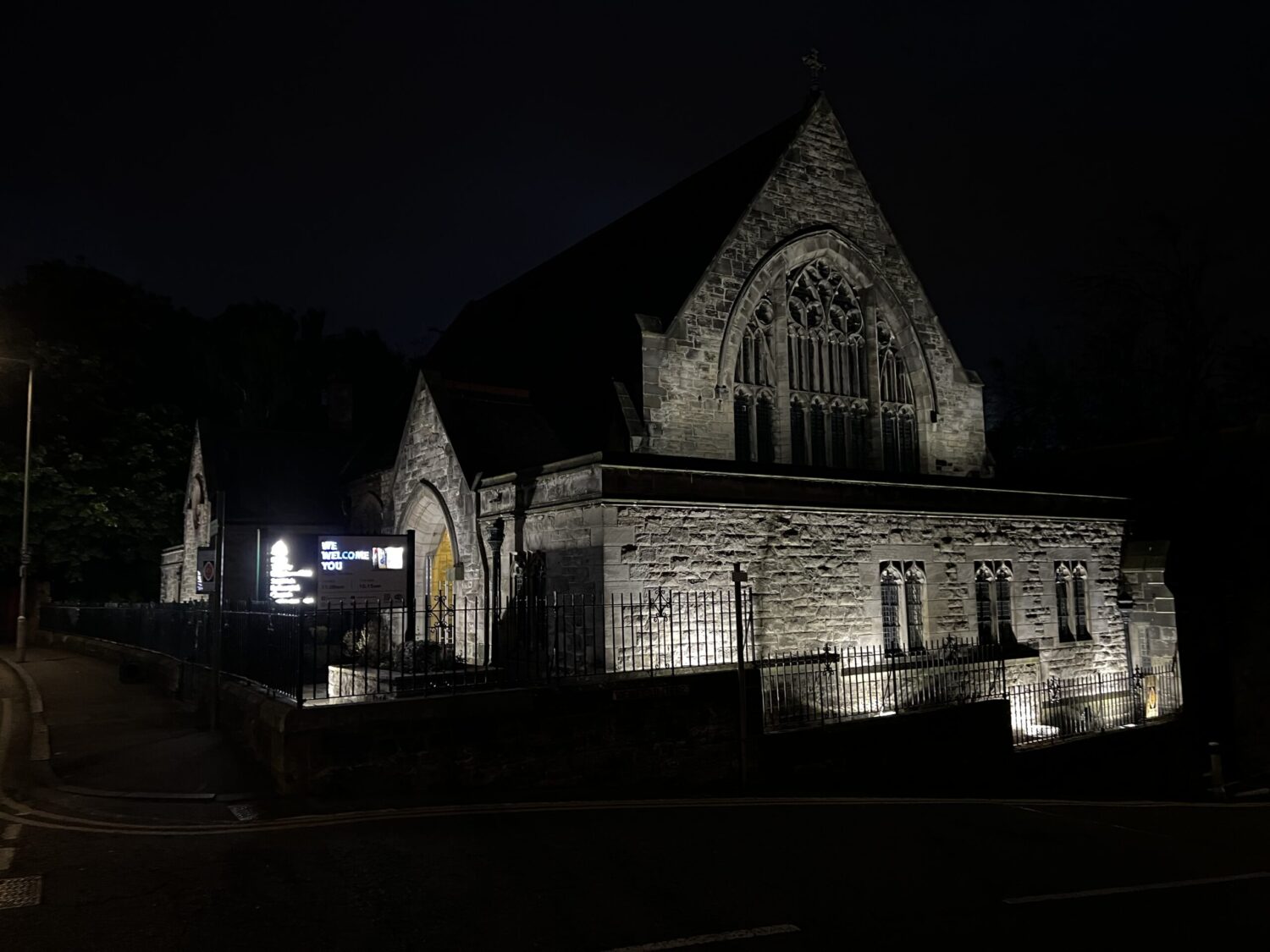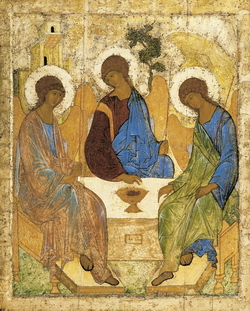In her sermon on Trinity Sunday, Dr Margaret Dineley introduced us to Rublev’s icon, which is based on Genesis 18, when Abraham is approached by three strangers as he sits under the oaks of Mamre, and shows them typical hospitality, learning only later he has entertained the Lord.
This story was much used by iconographers as a “symbol of the Trinity and the hospitality at the heart of it”. The colours of their garments identify the figures: the blue and green on the right (creation, water, sky and vegetation) are the Spirit, the breath of life; the reddish-brown and blue of the robes of the central figure (earth and heaven) symbolise Jesus; the hazy colours of the left-hand figure suggest the mystery surrounding God the Father.
Between the figures, who are looking toward each other, there is union and communion – a circle of love and of sharing hospitality. Each figure appears to be blessing the chalice on the plain table, but there is an openness to the front of this table – we are all invited to join this circle of love, to feel enfolded within this divine dance as Ann Persson calls it. The icon also reminds us that God invites everyone into the circle of love, whatever their views, needs and wishes. [Read Margaret’s sermon in full at this link]
O God our mystery,
you bring us to life,
call us to freedom,
and move between us with love.
May we so participate
in the dance of your Trinity,
that our lives may resonate with you,
now and forever.
[A collect for Trinity Sunday written by Janet Morley]


